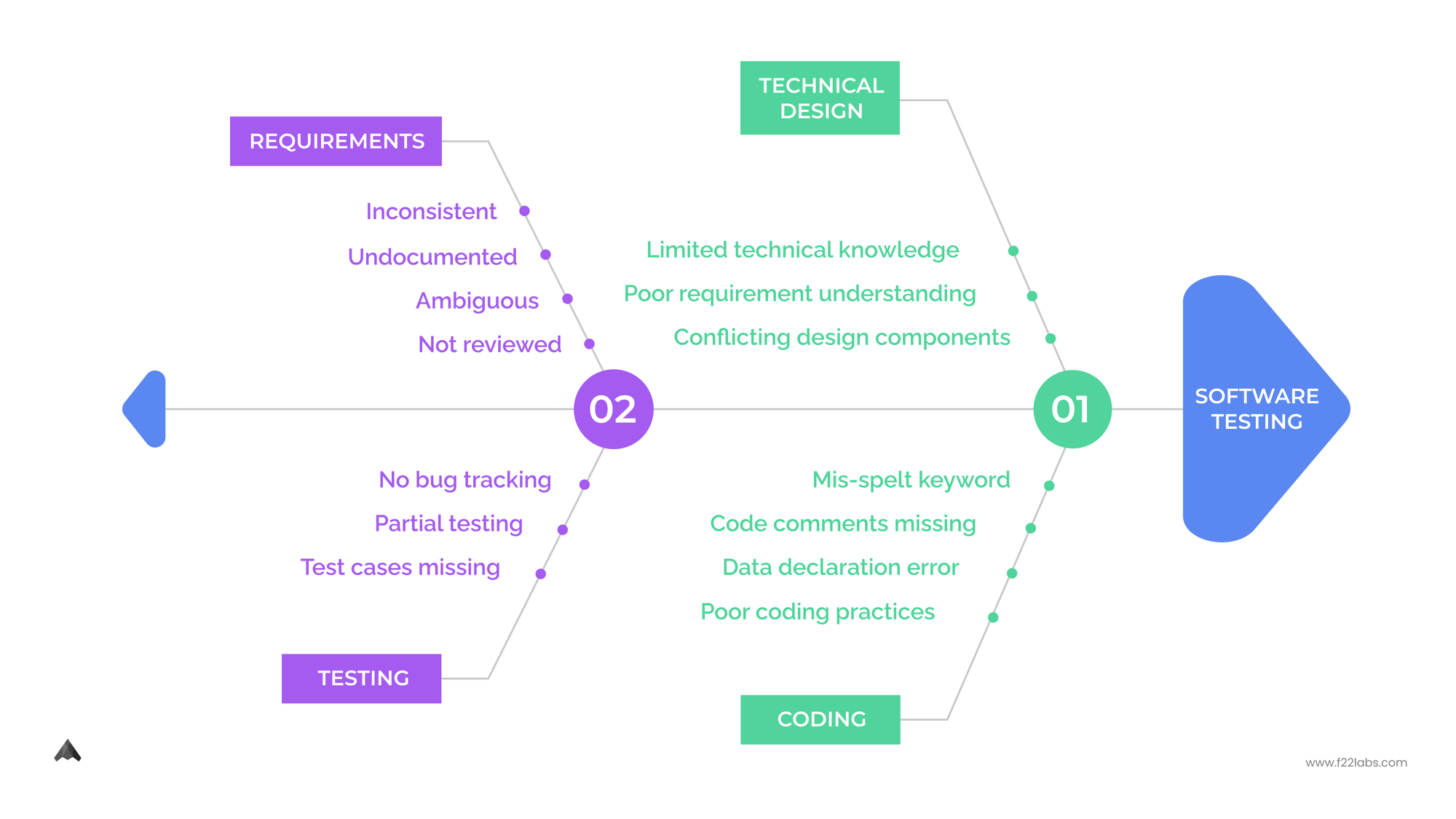Defects, bugs, etc. are a must in the software development world. However, it is not enough to fix them but to understand why they occurred. And that is where Defect Root Cause Analysis comes in. Let's dive deep into this vital process and explore how dramatically it will improve your software testing efforts.
What is RCA in Software?
RCA in software testing is a systematic approach to identifying the fundamental causes of defects. Instead of addressing surface-level symptoms, this process delves deeper to prevent similar issues from recurring. Effective RCA often begins with writing effective test cases to capture and reproduce the defects accurately.
Why is Defect RCA Critical?
1. Prevents Recurrence: By addressing the root cause, you prevent similar defects from appearing in the future.
2. Improves Process: It helps identify weaknesses in the development process, leading to overall quality improvements.
3. Saves Time and Resources: Fixing the root cause is often more efficient than repeatedly addressing symptoms.
4. Enhances Team Learning: RCA fosters a culture of continuous improvement and knowledge sharing.
The Defect RCA Process
1. Defect Identification and Documentation
Clearly describe the defect, including steps to reproduce, expected vs. actual results, and impact.
2. Data Collection
Gather all relevant information: code changes, environment details, test cases, and user reports.
3. Analysis
Use techniques like the "5 Whys" or Fishbone Diagram to dig deeper into potential causes.
Partner with Us for Success
Experience seamless collaboration and exceptional results.
4. Root Cause Identification
Pinpoint the fundamental reason(s) for the defect's occurrence.
5. Corrective Action
Develop and implement solutions to address the root cause.
6. Preventive Measures
Establish processes or checks to prevent similar issues in the future.
7. Verification and Closure
Confirm that the corrective actions effectively resolve the issue and prevent recurrence.
Effective RCA Techniques
Several techniques can be employed in root cause analysis in testing:
1. 5 Whys: Ask "why" repeatedly to drill down to the root cause. Example:
- Why did the user data get corrupted? (System crashed during update)
- Why did the system crash? (Out of memory error)
- Why was there an out-of-memory error? (Memory leak in new feature)
- Why was there a memory leak? (Improper resource management)
- Why was resource management improper? (Lack of code review for memory handling)
2. Fishbone (Ishikawa) Diagram: Visually map potential causes in categories like People, Process, Technology, and Environment.

3. Pareto Analysis: Focus on the vital few causes that contribute to the majority of defects.
4. Fault Tree Analysis: Create a logical diagram to show the relationship between a failure and its potential causes.
Best Practices for Effective RCA in Software Testing
1. Foster a Blame-Free Culture: Focus on learning and improvement, not finger-pointing.
2. Involve Cross-Functional Teams: Different perspectives can uncover hidden causes.
Partner with Us for Success
Experience seamless collaboration and exceptional results.
3. Use Data and Metrics: Base your analysis on concrete data, not just opinions.
4. Prioritize High-Impact Defects: Focus RCA efforts on critical or recurring issues.
5. Document and Share Findings: Create a knowledge base to prevent future similar issues.
6. Follow-up: Ensure corrective actions are implemented and effective.
Challenges in Implementing RCA in Software
- Time Constraints: RCA can be time-consuming, but it's an investment in future quality.
- Complexity: Modern software systems can have intricate, interconnected causes.
- Resistance to Change: Teams may be reluctant to alter established processes.
- Lack of Tools: Proper tools for tracking and analyzing defects are crucial.
Our Final Words
Root cause analysis in software testing is more than just a process; it's a mindset shift towards proactive quality improvement. By digging deeper to understand why defects occur, development teams can create more robust and reliable software. Incorporating various types of automation testing can further enhance the effectiveness of RCA.
Implementing a robust RCA process might seem challenging at first, but the long-term benefits of fewer defects, better team collaboration, and higher-quality software far outweigh the initial investment. Make RCA a cornerstone of your overall software testing strategy, and watch your products reach new heights of excellence.
Need Expert Help?
If you're struggling with implementing effective RCA in software or need assistance in improving your software quality assurance processes, F22 Labs can help. Our comprehensive Software Quality Assurance Services ensure your software meets the highest standards of quality and reliability. Contact us Now!
FAQ's
What is RCA in software testing?
RCA in software testing is a systematic process of identifying the fundamental reasons behind software defects to prevent their recurrence and improve overall software quality.
How does RCA improve software development?
RCA in software development improves the process by preventing defect recurrence, enhancing processes, saving time and resources, and fostering a culture of continuous learning and improvement among development teams.
What are some common RCA techniques in software testing?
Common RCA in testing techniques include the 5 Whys method, Fishbone (Ishikawa) Diagram, Pareto Analysis, and Fault Tree Analysis. These help in systematically identifying the root causes of software defects.
Next for you
Quality Assurance Testing
Web Application Testing Checklist for Beginners
Quality Assurance Testing
10 Best QA Software Testing Companies in 2025
Quality Assurance Testing
State Transition Testing Techniques in Software Testing: Ultimate Guide
